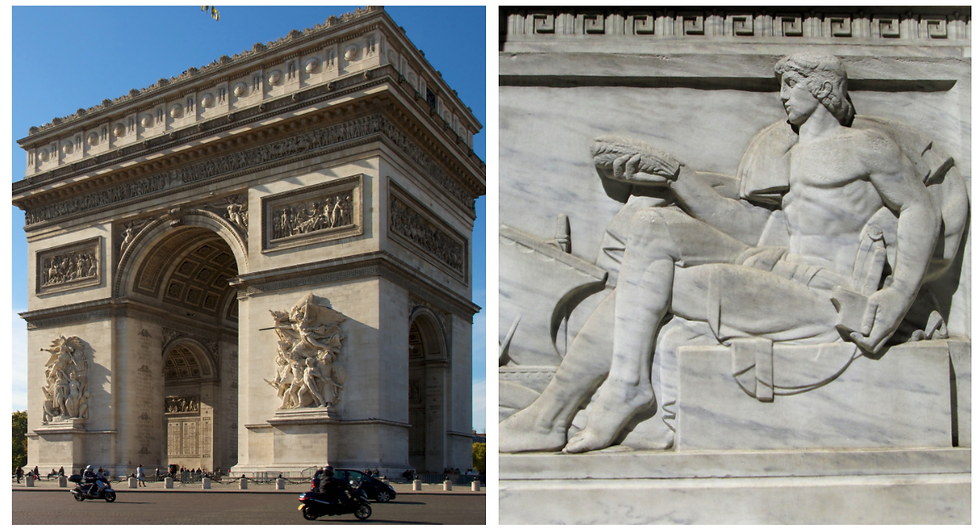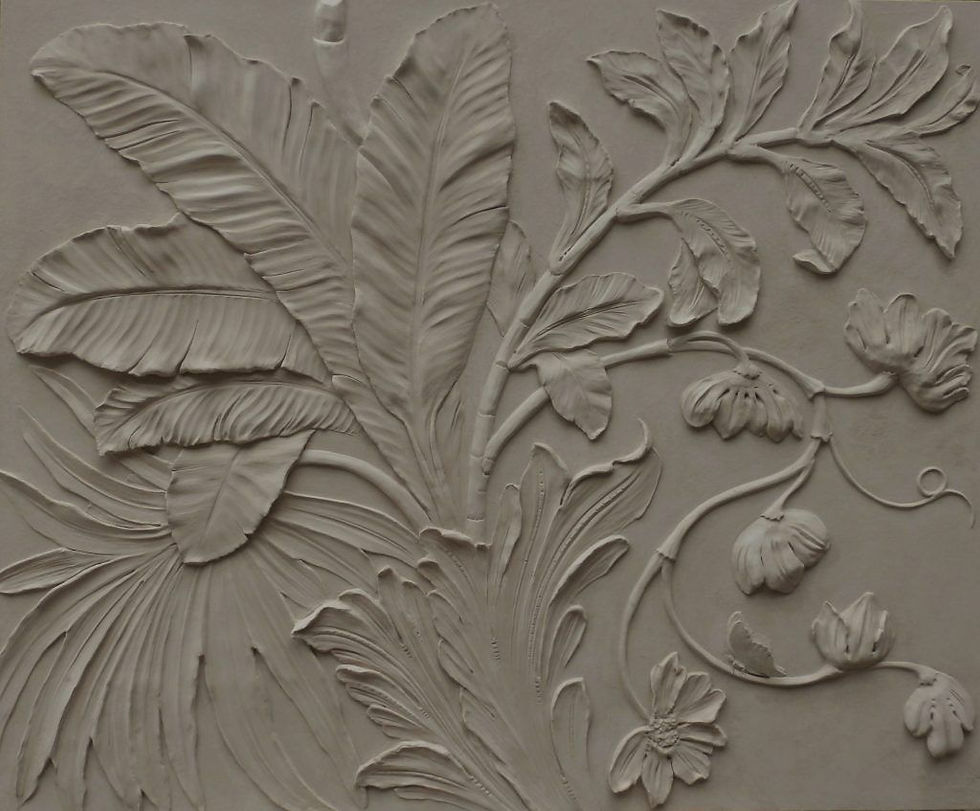Bas Relief Plaster Wall Art Techniques Explained
- Océane
- Jul 1, 2022
- 4 min read
Bas relief is an ancient tradition that has seen a modern-day revival through its use in contemporary interior design settings. The tradition is considered by some to be as old as humanity, it has been perfected over the ages and still today new innovations are being made to meet the demands of global trade. There are numerous techniques of bas relief and types of plaster such as marmorino and scagliola. Some lend themselves well to outdoor settings being found on monuments and buildings all over the world, while others are ideal for interiors lending themselves to more fine detailed work. With a revival in appreciation for tradition and hand made crafts these techniques are once again flourishing and being rediscovered by a new generation of artists and craftsmen.
Discover MJ Atelier's Work by visiting her dedicated artist page
What is bas relief?
Bas relief or "low relief" is a sculptural technique in which the design is only slightly raised above the flattened surface, it differs from high relief where the sculpture is much more elevated protruding out beyond the wall. Bas relief is considered to be a technique as old as humankind, the oldest examples are known as petroglyphs and are over 30,000 years old found on the walls of caves around the world. Bas relief was later used in the design of Ancient Greek and Roman sculptures.
In the middle ages, it was popularized by its use in churches across the European continent, often used to depict biblical figures and symbolism. This tradition carried on throughout the Renaissance where the technique was allowed to flourish. Artists of the Renaissance experimented by combining bas and high relief, giving for the first time, a sense of perspective to the viewer of the piece. The use of a wide variety of material such as terracotta, marble and stone were also experimented with and adopted.

Around the 19th-century bas relief was still a prominent part of the interiors and architecture landscape of Europe. It was famously used as part of the Parisian Arc de Triomphe. This lead to its use being introduced in the United States and was used particularly to adorn American federal government buildings.


Today we are seeing a resurgence of interest for this ancient craft particularly drawn from the movement towards preserving ancient tradition. A number of artist studios have adopted these techniques maintaining traditional motifs while also incorporating contemporary design.
(Left) an artist at MJ Atelier works on a bas relief plaster wall art for an interior design project. The final wall was displayed the 45th annual Kips Bay Show House which was visited by thousands of contemporary interior designers.
Bas relief materials
Bas relief can be created by using plaster, hand-carved wood or stone, marble or even terracotta. In recent years, however, plaster has been the most popular material for its malleability and versatility. Though some may still attempt to carve directly into marble as the great Michaelangelo would have done, it is considered more time consuming, expensive and limiting to work with marble or stone. Today different types of plaster have been popularised for the use of bas relief in interior and exterior designs.

Marmorino:
The first type of plaster is Marmorino, made of lime and calcium carbonate, this material is found in many of the ornamental decorative elements of the great Italian buildings of the past. Marmorino can be traced back to Ancient Greece and Rome but became popular again around the 16th Century when Roman ruins were unearthed and used as a major influence throughout the Renaissance period. Marmorino based ornaments can be used in many parts of the home including walls, plinths, ceilings and mouldings. This type of plaster is a great material for its durability often lasting for many centuries gaining in beauty and improving with age, this ancient practice is still done by such studios as Pigmentti.

Scagliola:
This type of plaster sometimes known as 'imitation marble' is lighter and more malleable than marmorino. Because of its more delicate texture, it can be used to achieve finely detailed artworks. While marmorino can be used outdoors, scagliola is more delicate and can be damaged by humidity so it is reserved for indoor living spaces.
Scagliola has been used since the first century BC but it's use became more prominent during the Renaissance much like other forms of bas relief. During the Baroque and Rococo period the technique again flourished and we are today seeing a revived interest in this ancient technique.

MJ Atelier Patented Technique:
MJ Atelier is a studio specialised in custom wall coverings. The studio has innovated traditional bas relief techniques with a patented technology that makes the designs crack resistant and durable. This revolutionary technique has allows the artists to craft within the studio and ship worldwide.
The studio mixes the beautiful motifs and designs of this historical crafts with modern-day needs for international shipment and fast project completions.
Geoffrey Preston
Geoffrey Preston is a small, artist-led company that specialises in beautiful new decorative plasterwork. Their projects range from a single, exquisitely carved signature piece to complete rooms. They work for architects, interior designers, and private clients all over the world. All of their work is handmade in Devon, England. Geoffrey Preston's plasterwork can add depth, texture and life to any room - transforming a plain space into an opulent interior. Discover more of their work here
The return of the classical
In recent years we have seen a resurgence in the desire for handcrafted designs and a move away from the mass-produced. All over Instagram, we can see artists being celebrated for reviving ancient traditions such as hand-lettering, classical drawing, calligraphy and bas relief. We may indeed be seeing a modern-day Renaissance through this revival of ancient crafts. At Artelier we have partnered with leading artists such as the studio of MJ Atelier and Geoffrey Preston to make these designs available to a wider audience. If you are interested in finding out more about how you could commission your very own bas relief wall, please don't hesitate to get in touch.






